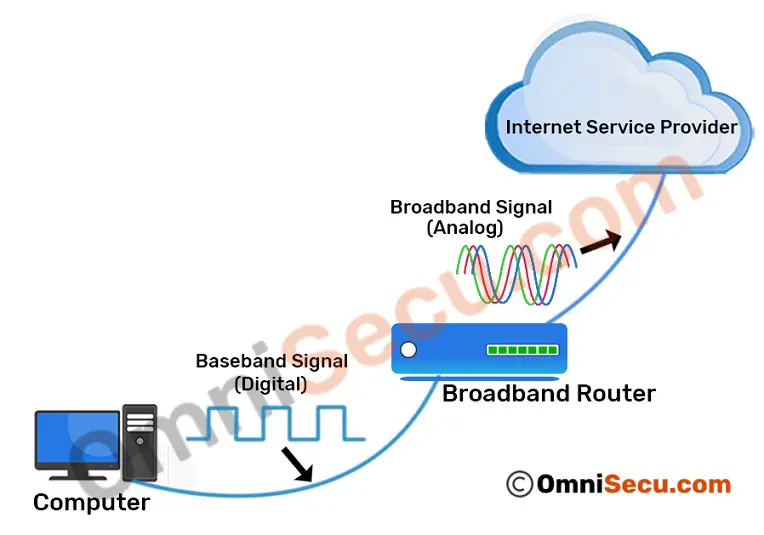Difference between Baseband and Broadband
In Baseband, data is sent as digital signals through the media as a single channel that uses the entire bandwidth of the media. Baseband communication is bi-directional, which means that the same channel can be used to send and receive signals. In Baseband, frequency-division multiplexing is not possible. (Multiplexing (short muxing) is a process where multiple analog message signals or digital data streams are combined into one signal over a shared medium.)
Broadband sends information in the form of an analog signal. Each transmission is assigned to a portion of the bandwidth, hence multiple transmissions are possible at the same time. Broadband communication is unidirectional, so in order to send and receive, two pathways are needed. This can be accomplished either by assigning a frequency for sending and assigning a frequency for receiving along the same cable or by using two cables, one for sending and one for receiving. In broadband frequency-division multiplexing is possible.
Baseband is used for short distance data transfer. Entire bandwidth of the cable is used for single signal transmission. Common Ethernet Standards use Baseband for LAN data transfer.
Broadband is used for long distance data transfer. Entire bandwidth of the cable is used for multiple signal transmission at different frequencies. Home Internet connection and TV cables use broadband for data transfer.
If you are using a broadband internet connection for your home internet, the signals from your internet service provider up to your broadband router are broadband signals. But, the signals used inside your Ethernet Local Area Network (LAN) are baseband signals.
Please refer below image.

As a computer networking student, you need to feed your brain that "Ethernet standards use baseband signals for data transfer".